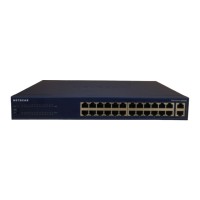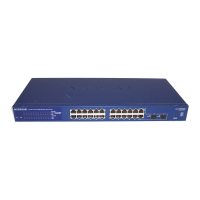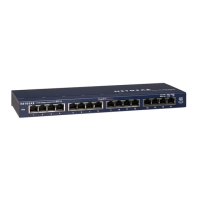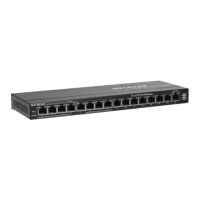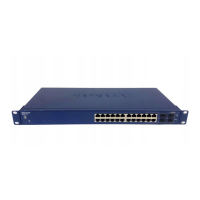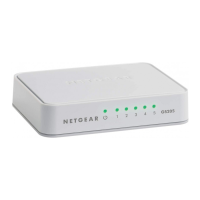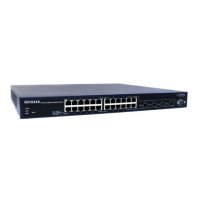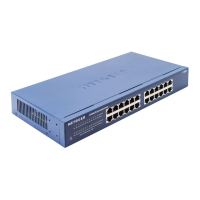Managing Device Security
267
S3300 Smart Managed Pro Switch
Port Security Configuration
Use the Port Security feature to lock one or more ports on the system. When a port is locked,
only packets with an allowable source MAC addresses can be forwarded. All other packets
are discarded.
To configure the global port security mode:
1. Select Security > T
raffic Control > Port Security > Port Security Configuration.
2. In the Port Securit
y Mode field, select the appropriate radio button to enable or disable port
security on the switch. The default is Disable.
3. Click the Ap
ply button.
The Port Security Violation table shows information about violations that occurred on ports
t
hat are enabled for port security. The following table describes the fields in the Port Security
Violation table.
Table 93. Port security violation information
Field Description
Port Identifies the port where a vio
lation occurred.
Last Violation MAC The source MAC address of the last packet that was discarded at a locked port.
VLAN ID The VLAN ID corresponding to the Last Violation MAC address.
Port Security Interface Configuration
A MAC address can be defined as allowable by one of two methods: dynamically or statically.
Both methods are used concurrently when a port is locked.
Dynamic locking implements a first arrival mech
anism for port security. You specify how
many addresses can be learned on the locked port. If the limit has not been reached, then a
packet with an unknown source MAC address is learned and forwarded normally. When the
limit is reached, no more addresses are learned on the port. Any packets with source MAC
addresses that were not already learned are discarded. You can effectively disable dynamic
locking by setting the number of allowable dynamic entries to zero.
Static locking allows you to specify a list of MAC addresses that are allowed on a port. The
b
ehavior of packets is the same as for dynamic locking: only packets with an allowable
source MAC address can be forwarded.
To configure port security settings:
1. Select Security > T
raffic Control > Port Security > Interface Configuration.
2. Select
the ports or LAGs to configure.
For information about how to select and configure one or more ports or LAGs, see
Configuring Interface Settings o
n page 32.
3. S
pecify the following settings:
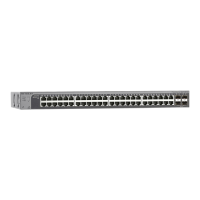
